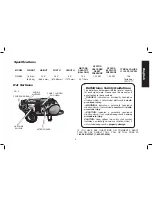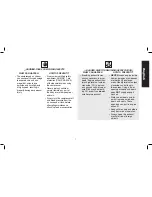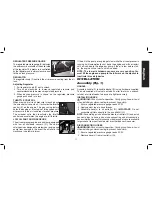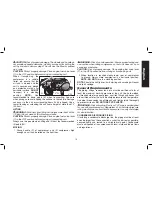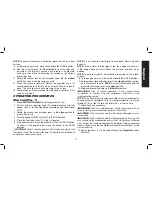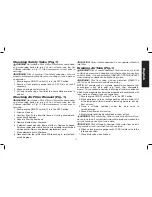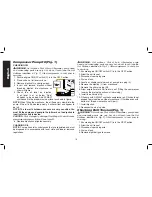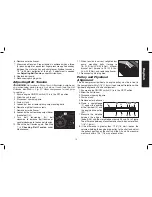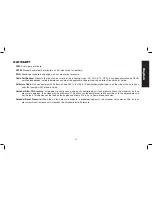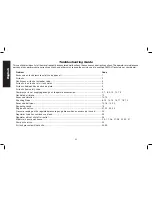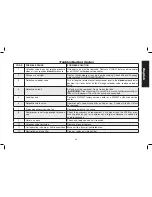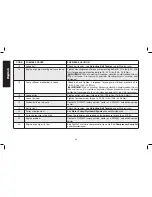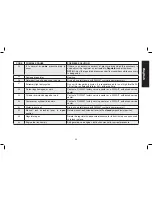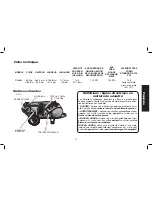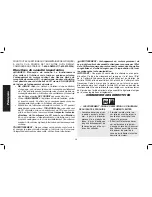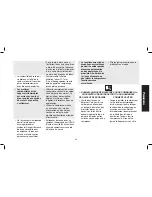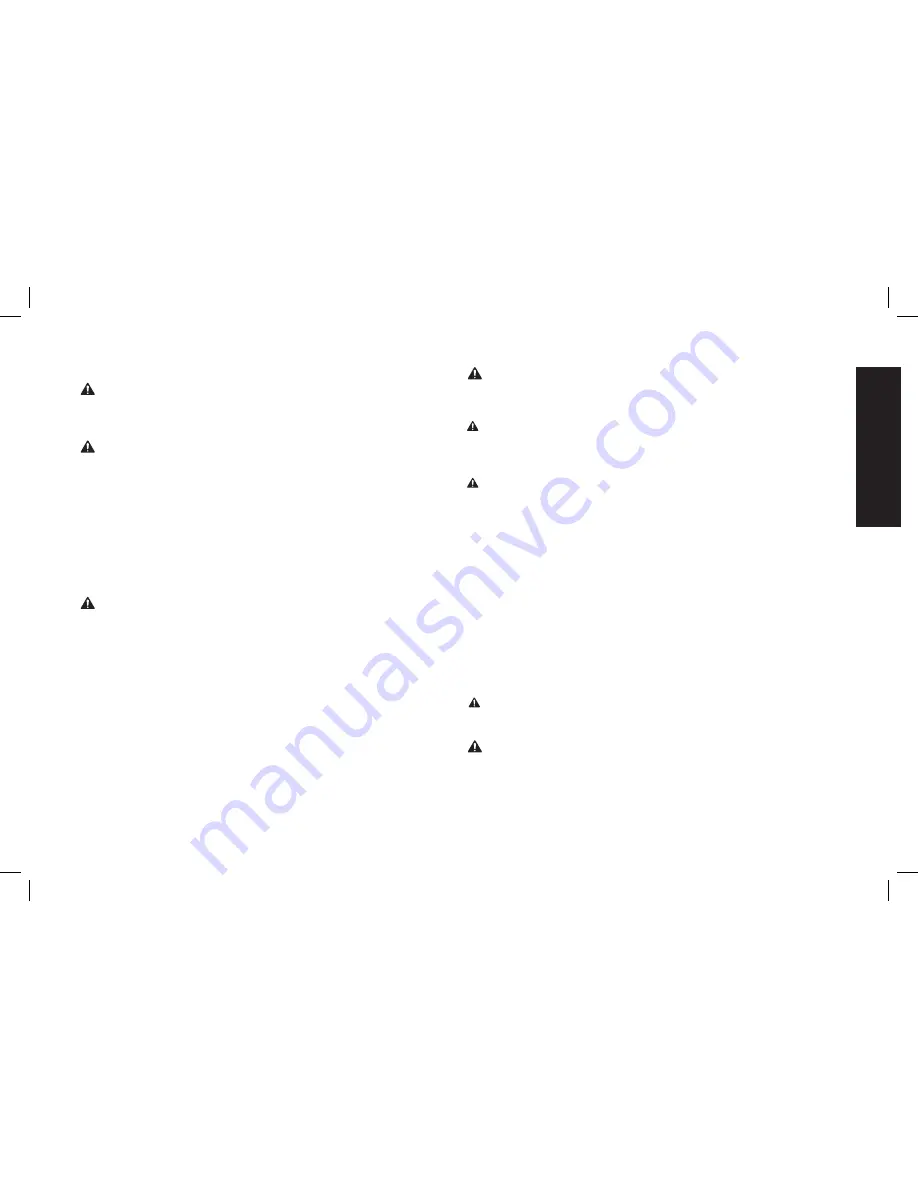
17
English
Checking Safety Valve (Fig. 1)
WARNING
: Hot surfaces. Risk of burn. Aftercooler, pump head,
and surrounding parts are very hot, do not touch (see the Hot
Surfaces identified in Fig. 2). Allow compressor to cool prior to
servicing.
WARNING:
Risk of bursting. If the safety valve does not work
properly, over-pressurization may occur, causing air tank rupture or
an explosion.
1. Ensure engine ON/OFF switch (C) is in the OFF Position.
2. Ensure air tank pressure gauge reads 0 PSI. Drain air tank if
necessary.
3. Grasp wire ring on safety valve (I).
4. Pull and release ring a few times to ensure plunger moves in
and out.
Checking Air Filter Element (Fig. 1)
WARNING
: Hot surfaces. Risk of burn. Aftercooler, pump head,
and surrounding parts are very hot, do not touch (see the Hot
Surfaces identified in Fig. 2). Allow compressor to cool prior to
servicing.
1. Ensure engine ON/OFF switch (C) is in the OFF Position.
2. Allow unit to cool.
3. Unscrew filter (A) top from filter base by turning counterclock-
wise about 5 degrees.
4. Separate filter top from base.
5. Remove element from filter base.
6. If element needs cleaning, blow out with air. Replace if needed.
Purchase replacement parts from your local dealer or authorized
service center. Always use identical replacement parts.
7. Place element back in filter base.
8. Reconnect filter top to filter base. While pushing in, rotate clock-
wise 5 degrees.
CAUTION:
Risk of unsafe operation. Do not operate without air
inlet filter.
Draining Air Tank (Fig. 1)
WARNING:
Risk of unsafe operation. Risk from noise. Air tanks
contain high pressure air. Keep face and other body parts away from
outlet of drain. Use eye protection [ANSI Z87.1 (CAN/CSA Z94.3)]
when draining as debris can be kicked up into face.
WARNING:
Risk from noise. Use ear protection [ANSI S12.6
(S3.19)] as air flow noise is loud when draining.
NOTE:
All compressed air systems generate condensate that
accumulates in any drain point (e.g., tanks, filter, aftercoolers,
dryers). This condensate contains lubricating oil and/or substances
which may be regulated and must be disposed of in accordance with
local, state, and federal laws and regulations.
1. Ensure engine ON/OFF switch (C) is in the OFF Position.
2. Move compressor into an inclined position so drain valve (J) is
at the lowest point (this will assist in removing moisture, dirt, etc.
from air tanks)
3.
Place a suitable container under the drain valve to
catch discharge.
4. Grasp black lever on drain valve.
5. Slowly rotate lever to gradually bleed air from air tank.
WARNING:
Risk of bursting.
Drain air tank daily. Water will con-
dense in air tank. If not drained, water will corrode and weaken the
air tank causing a risk of air tank rupture.
CAUTION
: Risk of Property Damage. Drain water from air tank
may contain oil and rust which can cause stains.
6. When air tank pressure gauge reads 10 PSI, rotate valve to the
fully open position.
7. Close drain valve when finished.

